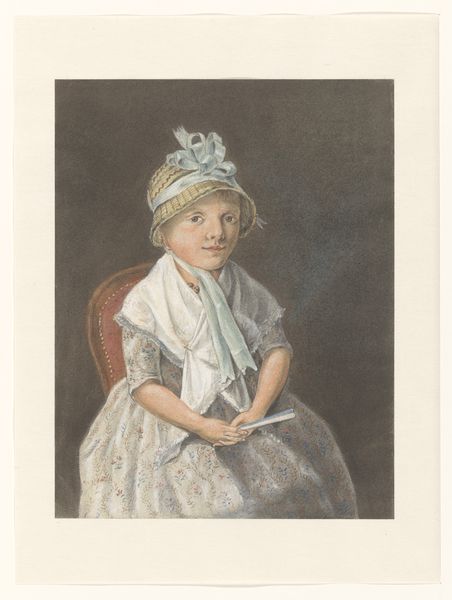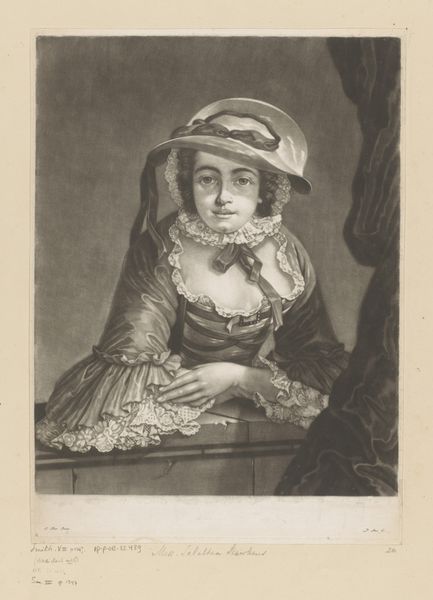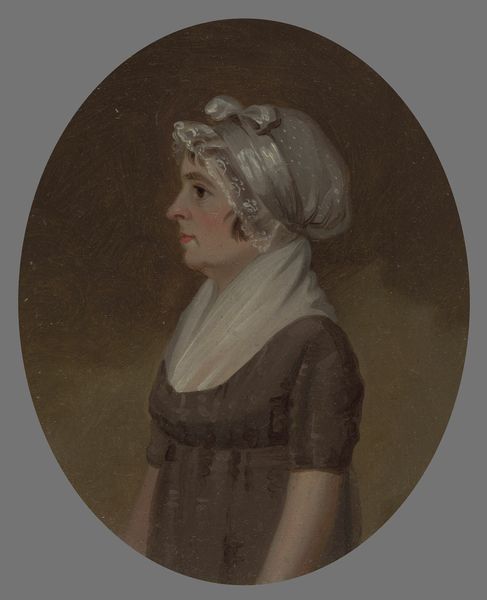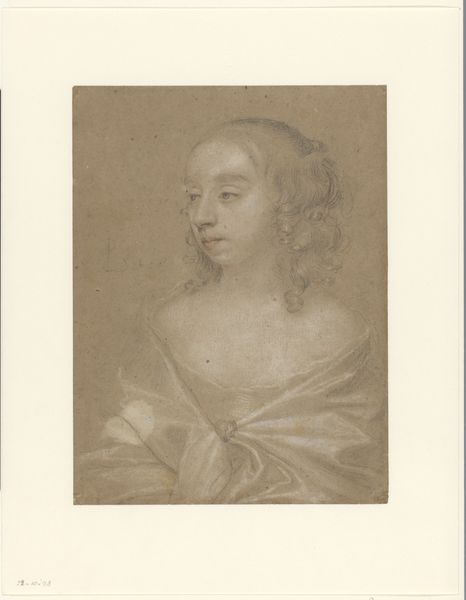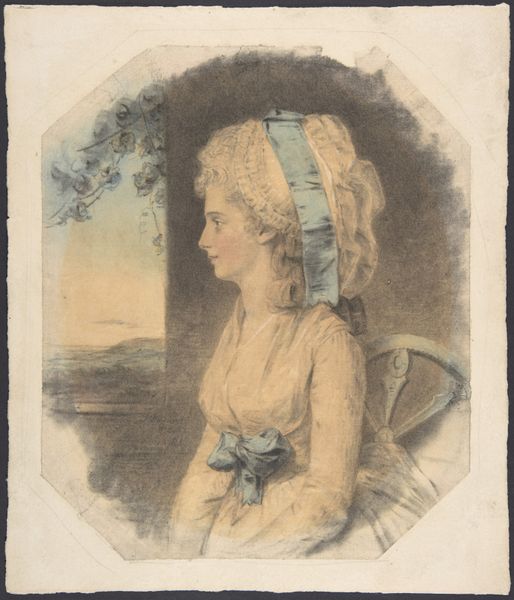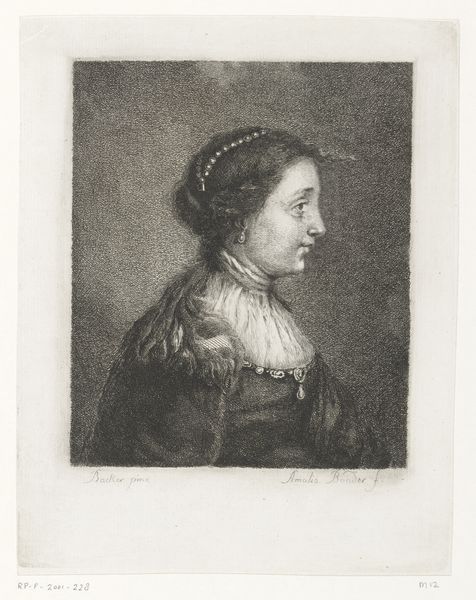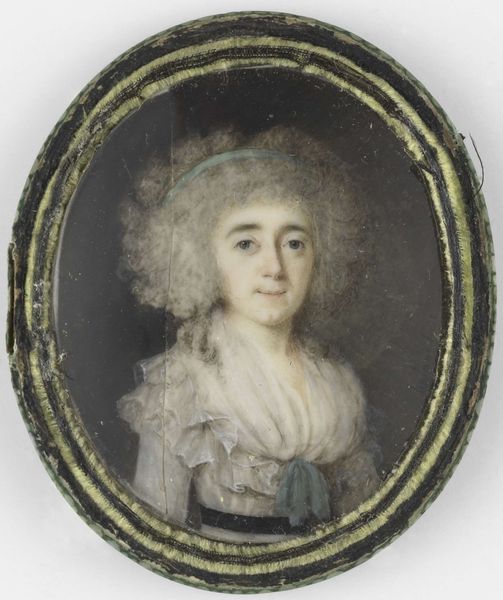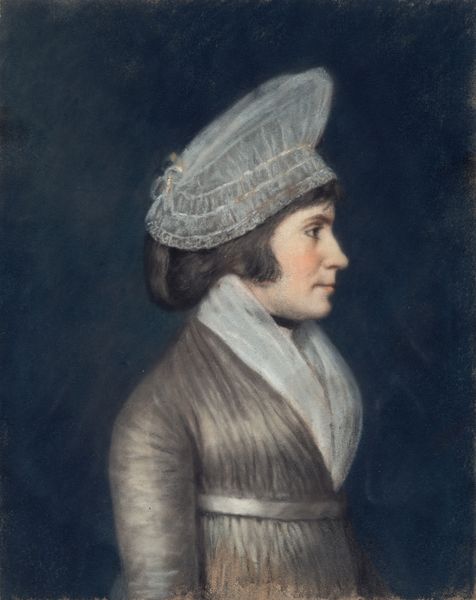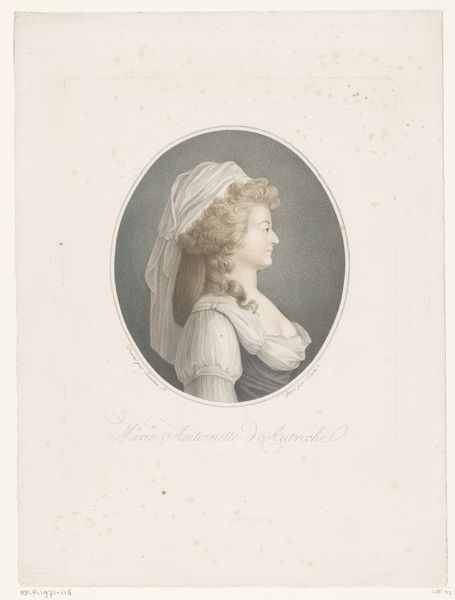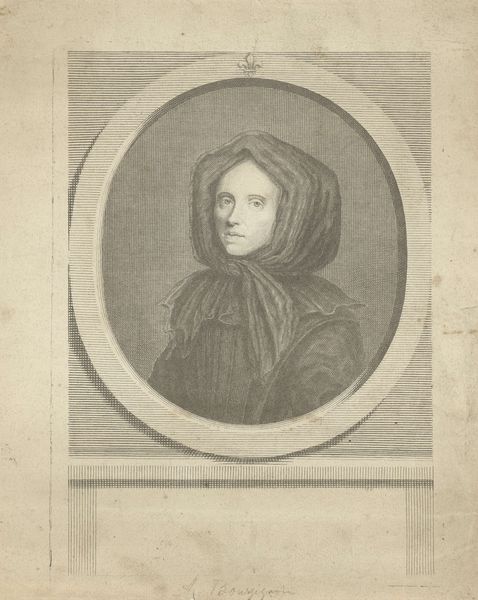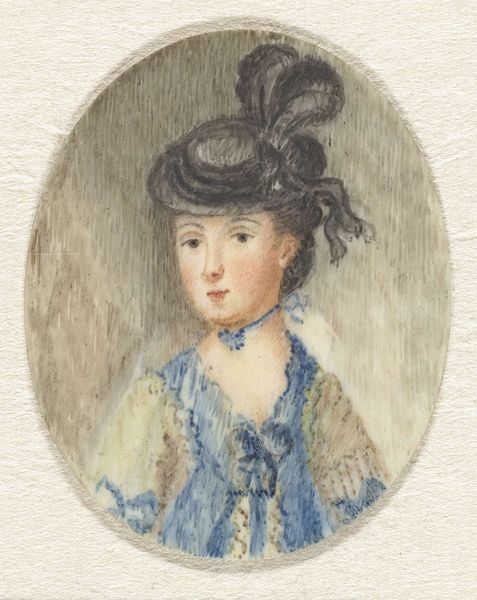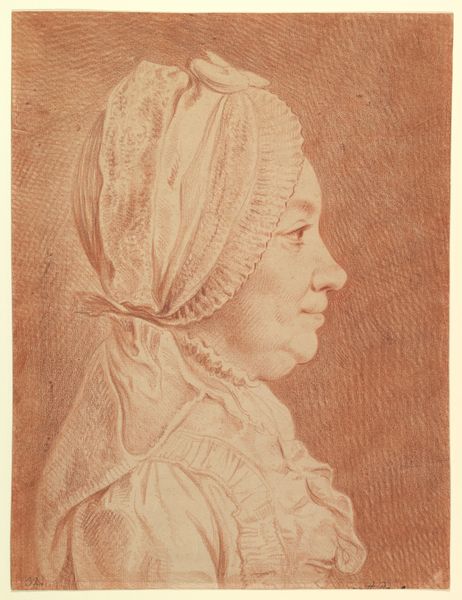
pastel
#
portrait
#
oil painting
#
romanticism
#
pastel
Dimensions: 9 x 7 7/8 in. (22.9 x 20 cm)
Copyright: Public Domain
Curator: It feels subdued, almost somber in its presentation. Editor: Indeed. Let’s consider this work more closely. This is a portrait of Dorothea Hart, rendered in pastel by James Sharples in 1809. It's currently held at the Metropolitan Museum of Art. Curator: Sharples has really focused on the bare essentials, hasn't he? There's almost a clinical detachment. What do you think accounts for such restraint? Is it purely stylistic? Editor: I think it's partly driven by the practical realities of the medium. Pastel portraits allowed for efficient replication in terms of output of images. They provided a lucrative option for ascending gentry and merchants seeking affordable, reproducible likenesses to signify social capital, expanding and cementing familial lines across oceans. Curator: Absolutely. She is positioned quite literally in profile; Sharples uses contour as if diagramming an individual to suggest status and authority within a rapidly developing social environment. Editor: Notice how her plain bonnet and dress almost become raw materials in the overall composition. What kind of labor practices afforded the textile production? Curator: Interesting point. Dorothea's presentation speaks to the constraints and the social role assigned to women of that time period in burgeoning mercantile environments. While class position can be interpreted through clothing, individual identity is noticeably erased by its simplicity and uniformity. Editor: Yet that simplicity highlights the technical mastery of the artist. The paper itself becomes an active component, informing both shadow and light as though the final effect requires the consumption of support and media to produce capital. The artist trades not simply in an image, but in process and access. Curator: It offers a fascinating, albeit somewhat bleak, mirror to early American identity and its intersections with commerce and gendered social confines. Editor: Ultimately, an artifact revealing not just an image of a woman but also how the mechanics of representation helped build nascent social strata and economies.
Comments
No comments
Be the first to comment and join the conversation on the ultimate creative platform.
